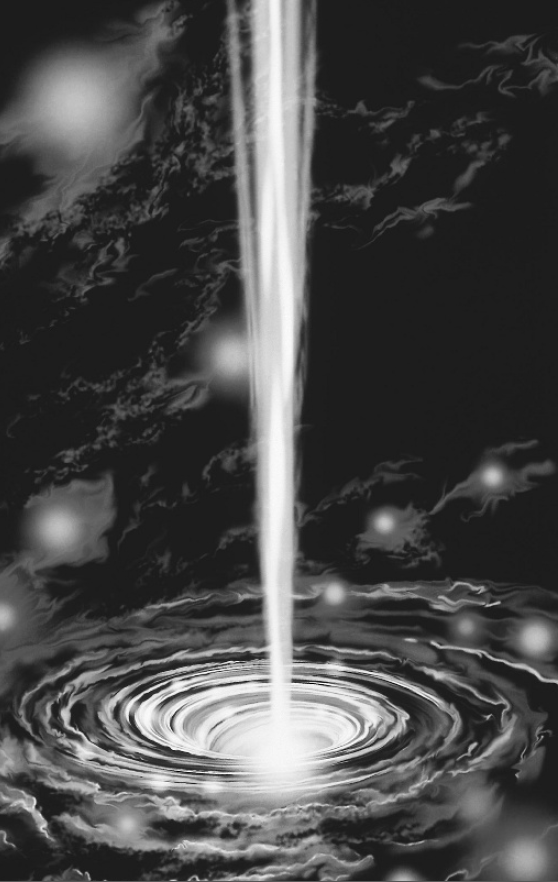


 الفيزياء الكلاسيكية
الفيزياء الكلاسيكية
 الكهربائية والمغناطيسية
الكهربائية والمغناطيسية
 علم البصريات
علم البصريات
 الفيزياء الحديثة
الفيزياء الحديثة
 النظرية النسبية
النظرية النسبية
 الفيزياء النووية
الفيزياء النووية
 فيزياء الحالة الصلبة
فيزياء الحالة الصلبة
 الليزر
الليزر
 علم الفلك
علم الفلك
 المجموعة الشمسية
المجموعة الشمسية
 الطاقة البديلة
الطاقة البديلة
 الفيزياء والعلوم الأخرى
الفيزياء والعلوم الأخرى
 مواضيع عامة في الفيزياء
مواضيع عامة في الفيزياء|
Read More
Date: 13-12-2015
Date: 22-12-2015
Date: 22-12-2015
|
Giant Black Holes and the Fate of the Universe
As long as stellar black holes were the only kind of black holes for which science could find even indirect evidence, the universe seemed a far less scary place than it does today. After all, stellar black holes did not appear to pose any major short- or long-term danger to the universe as a whole or to the existence of life within it. True, when a giant star collapses to form a black hole, any living things inhabiting the planets or moons of that solar system will first be fried and then frozen. No life of any kind will be able to survive for very long. However, these lethal effects would remain localized to that system. This is because the distances separating most stars are immense about four to seven light-years, or 24 trillion to 42 trillion miles. The gravitational effects and radiation of even the most massive stellar black hole could be felt over only a small fraction of such distances. Therefore, this kind of black hole would pose no credible threat to neighboring stars, their planets, and any life forms they might harbor.
When one considers the larger scheme of things, however, such safety zones become illusory and ultimately useless. Scientists now know that the danger posed by black holes increases significantly in areas of space where many large stars lie very close together (on the order of only a few light-weeks, light days, or even light-hours apart). In such an environment, several neighboring giant stars can collapse into black holes over time. As these superdense objects drift and meander, some will merge, producing more massive bodies with stronger gravities.
Finally, one very massive black hole will dominate the scene. It will continue to draw in clouds of gas, stars, planets, smaller black holes, and other materials floating in its cluttered cosmic neighborhood; and over the course of millions and billions of years, it will grow still more massive. Indeed, it will become a sort of cosmic monster with an insatiable appetite. Only recently have astronomers come to the unsettling realization that such giant, or supermassive, black holes not only exist, they may well play a major role in the ongoing evolution and ultimate fate of the universe and everything in it.

This drawing depicts a black hole wreaking havoc at the center of a galaxy. Most or all galaxies may harbor such objects.



|
|
|
|
التوتر والسرطان.. علماء يحذرون من "صلة خطيرة"
|
|
|
|
|
|
|
مرآة السيارة: مدى دقة عكسها للصورة الصحيحة
|
|
|
|
|
|
|
نحو شراكة وطنية متكاملة.. الأمين العام للعتبة الحسينية يبحث مع وكيل وزارة الخارجية آفاق التعاون المؤسسي
|
|
|